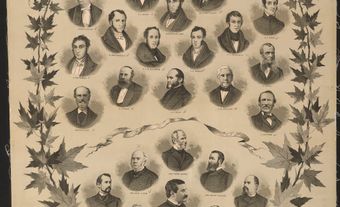Neilson, John
John Neilson. Publisher, politician, b Balmaghie, Kirkcudbrightshire, Scotland, 17 Jul 1776, d Quebec City 1 Feb 1848. Neilson at 14 joined his elder brother Samuel in Lower Canada to work in the printing house of their uncle, William Brown, the first printer in Quebec and founder of the Quebec Gazette. John Neilson inherited control of that newspaper in 1793, and under his guidance it became an influential and respected voice in the community.
Neilson published a considerable amount of other material, including music. No earlier example of Canadian musical typography has been discovered than his Graduel romain (1800), 645 pages of mass texts and chants in square notation on four-line staves, all printed from moveable type. This was followed by the Processional [sic] romain (1801) and the Vespéral romain (1802). An Extrait du processional [sic] romain (1819) is the only other known example of music published by Neilson. Neilson attempted to print Joseph Quesnel'sColas et Colinette. Letters (1807-9) from Quesnel to Neilson preserved at the NA of C reveal the latter's difficulties in preparing the opera for printing and indicate that it was to be engraved rather than typeset - further proof of Neilson's enterprising approach to his trade.
In 1818 Neilson was elected to the provincial assembly and, to avoid a conflict of interest, turned over his publishing activities to his eldest son, Samuel. Samuel Neilson, in partnership with William Cowan, published second editions of the Processionnal romain (1825), the Graduel romain (1827), and the Vespéral romain (1828) and the bilingual Elementary Treatise on Music/Traité élémentaire de musique (1828) by T.F. Molt.
On Samuel Neilson's death in 1837, his younger brother William took over the publishing house and issued third editions of the three books (1841-2) as well as two hymnbooks, one in French, Recueil de messes, d'hymnes, de proses, de motets (1843), and the other in Algonkian, Aiamieu Kushkushkutu mishinaigan (1847), edited by Frère Flavien Durocher, probably the first in Canada to include music with the native texts.

 Share on Facebook
Share on Facebook Share on X
Share on X Share by Email
Share by Email Share on Google Classroom
Share on Google Classroom

